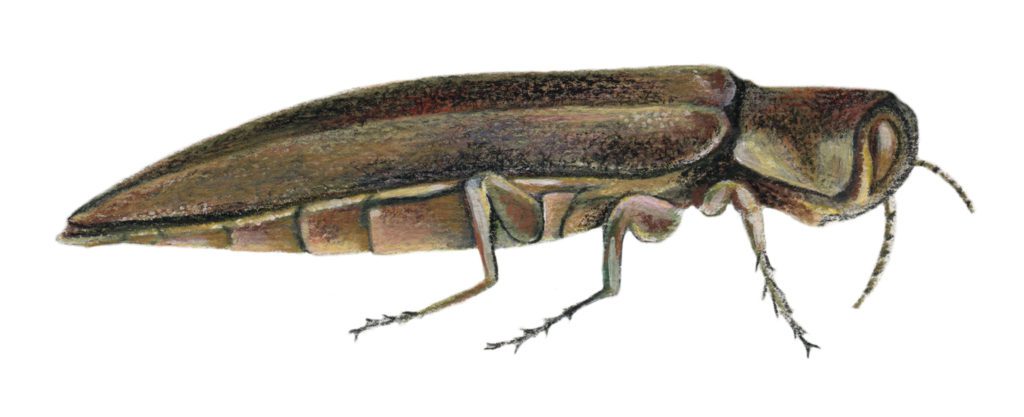
Native to North America, damage caused by the Bronze Birch Borer (BBB) dates back to the late 1800’s and continues to present day. This pest is known to attack all native and non-native species of birch, although susceptibility varies. Adult beetles cause relatively little damage, but the larvae feed on the xylem layer and disrupt the movement of water and minerals within the tree. The BBB is opportunistic and thrives in birch trees that are weakened or stressed by agents such as drought, soil compaction, root injury, other insects, and old age. Birch trees tend to prefer cool and moist growing sites, which are not typically found in most residential and urban areas. With frequent stress caused by dehydration, high temperatures, and compacted soils, landscape birch trees are commonly attacked by this pest.
How Do I Know if My Tree has Bronze Birch Borers?
Early symptoms of the BBB include yellow leaves, branch dieback, and an overall thin appearance to the upper part of the canopy. Trees may be infested for several years before symptoms are visible in the canopy, but eventually the canopy dies from the top down. Larvae feed underneath the bark and disrupt the flow of water to the canopy. Wound tissue forms around these disruptions, creating a serpentine lump underneath the bark. Eventually the symptoms progress downward to the lower branches and trunk.
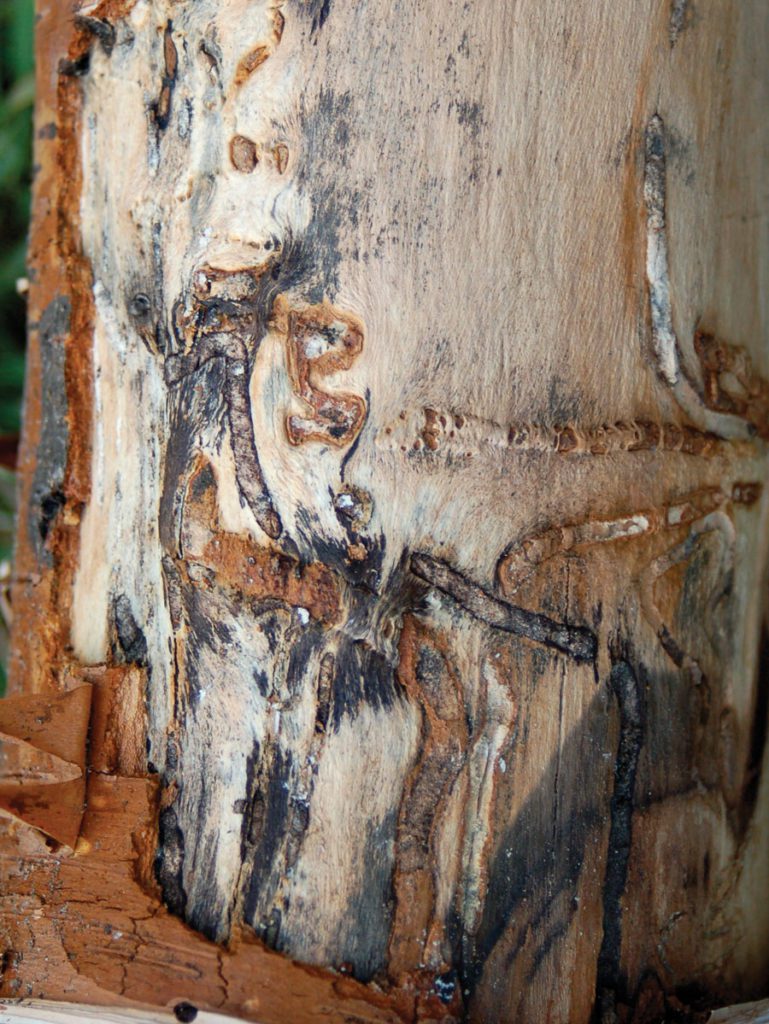
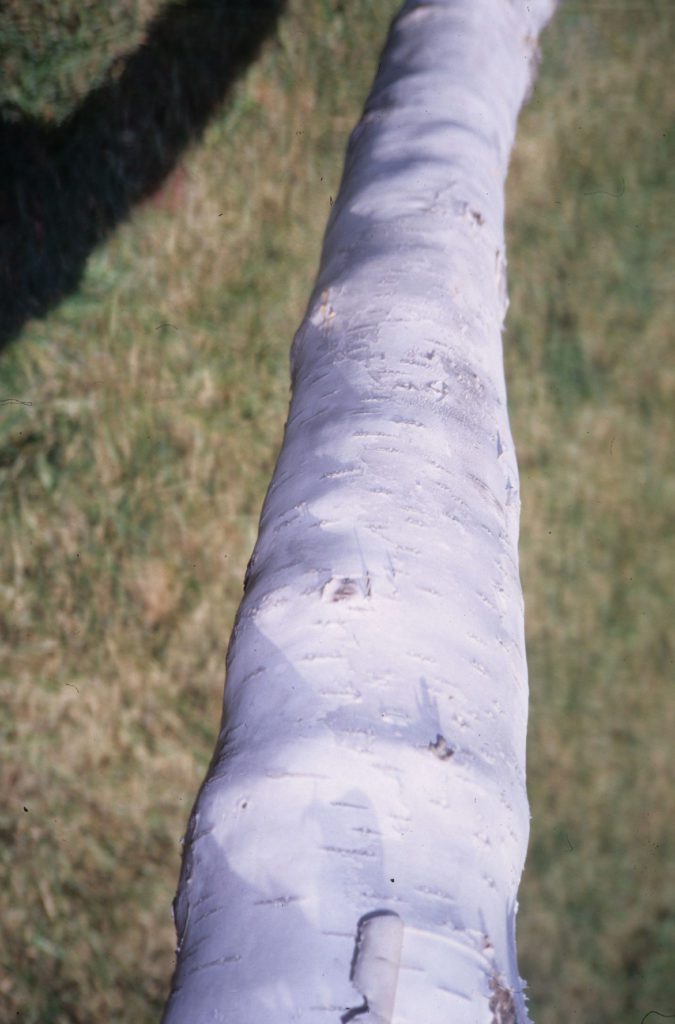
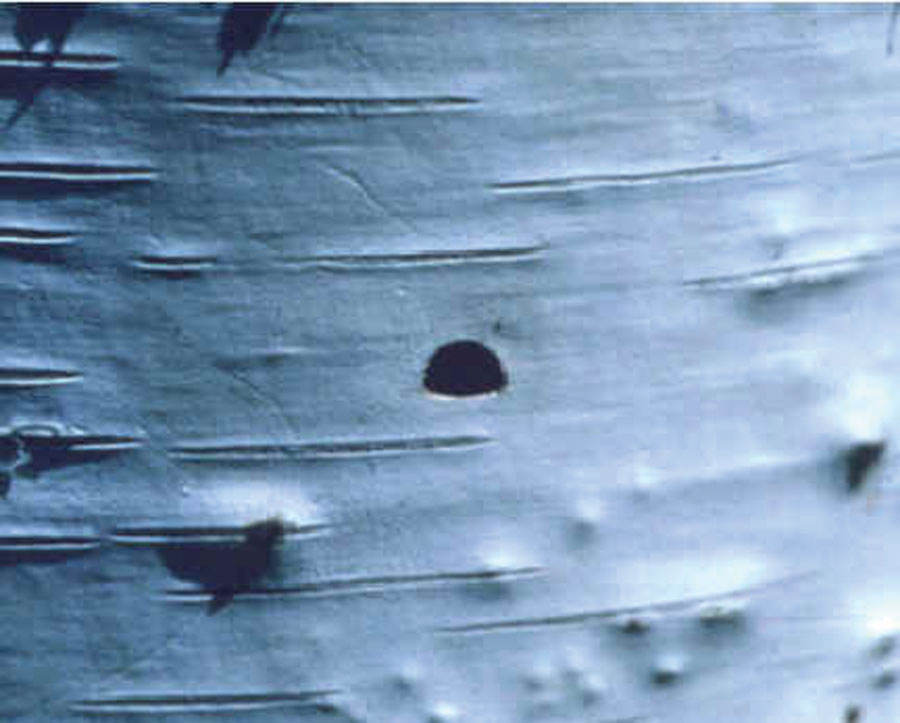
How Can I Protect My Birch Tree?
The best protection from the BBB is preventing stress and maintaining overall birch tree health by watering during drought, mulching, and minimizing damage to the root zone that could cause root injury and stress.
Adequate water is a key factor in maintaining healthy birch trees. A slow, deep watering event once per week during dry conditions will help maintain soil moisture levels and minimize the stress that invites the bronze birch borer.
Mulch is very beneficial for trees because it reduces competition with turf and moderates soil temperature and moisture levels. The addition of 2-4 inches of wood chips or shredded bark under the drip line can have a very beneficial effect.
BBB Treatment Quick Facts
- Preventively treating your tree is the best defense against BBB.
- Treat important trees first: specimen trees, trees shading your home, patio trees, etc. These trees should be healthy and vigorous.
- Once treatments begin, you will need to treat your tree yearly to maintain protection.
- Xytect or Transtect will also protect your birch tree from these other insects: Birch Leafminers, Aphids, Spittle Bugs, Flat Head Borers, Leaf Hopper, Soft Shell Scale.
Treatment
Research has shown that Xytect and Transtect, both systemic insecticides, are highly effective at protecting birch trees from BBB and other insects. Xytect should be applied in the spring or the fall and Transtect should applied in the summertime. Both are at the base of the tree and are evenly distributed throughout the canopy by the pull created by the leaves. When the insect ingests the treatment they quickly stop feeding and die.
Transtect will provide rapid protection (within a week on most sized trees) and will last the entire season. Xytect can take up to 6-8 weeks to be active in the canopy but will provide 12 months of protection. The time of year will determine which treatment will be recommended.
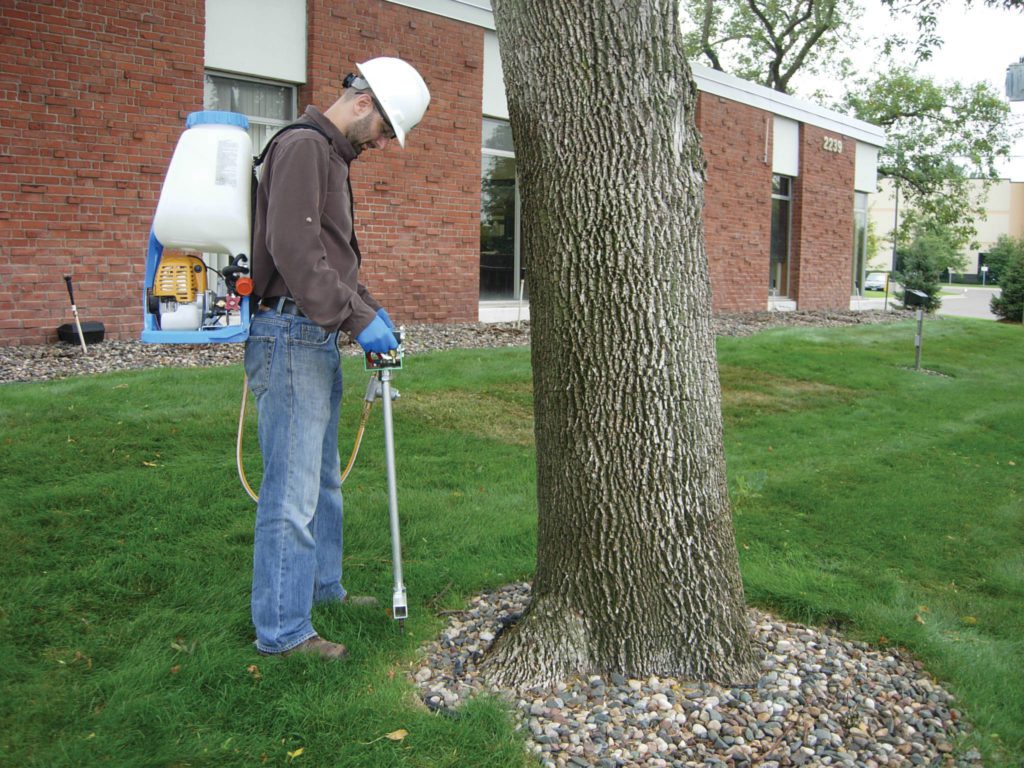
Contact us to schedule a consultation with a certified arborist.


